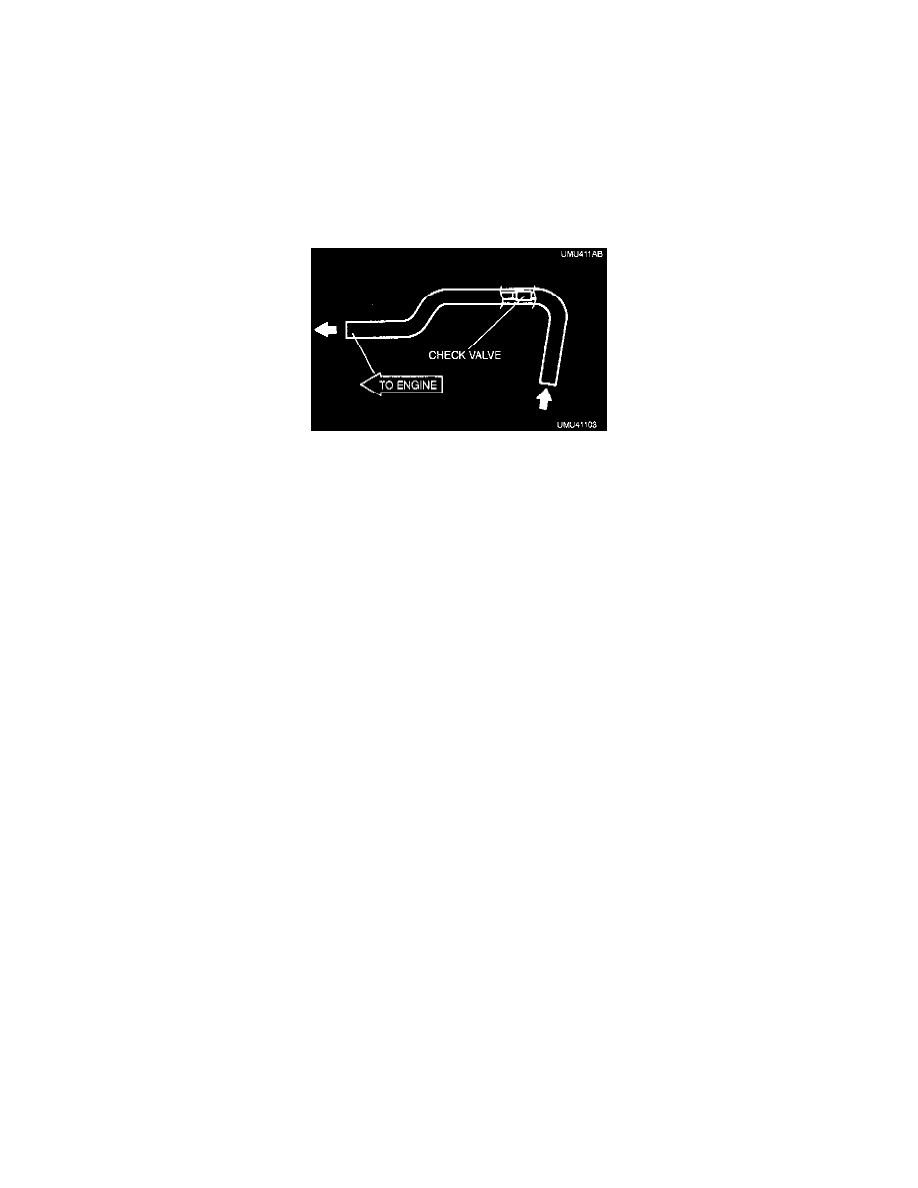MPV LX 4WD V6-3.0L SOHC (1997)

Vacuum Brake Booster: Component Tests and General Diagnostics
Hydraulic Pressure
1. If with the engine stopped (vacuum 0 kPa ( 0 inHg )) the fluid pressure is within the specification, the unit is operating.
^
Brake Pedal Force is 196 N (44 lbs.) then the fluid pressure is 1,128 kPa (164 psi.) min.
2. Start the engine. Depress the brake pedal when the vacuum reaches 66.7 kPa (19.7 inHg). If the fluid pressure is within the specification, the unit
is operating.
^
Brake Pedal Force is 196 N (44 lbs.) then the fluid pressure is 8,044 kPa (1,166 psi.) min.
Vacuum Line Inspection
1. Disconnect the vacuum hose from the engine.
2. Install the hose with the arrow mark pointing toward the engine.
3. Apply suction and pressure to the hose from the engine side. Verify that air flows only toward the engine.
If air passes in both directions or not at all, replace the vacuum hose.
Vacuum Loss (Loaded Condition)
1. Start the engine.
2. Depress the brake pedal with a force of 196 N (44 lbs).
3. With the brake pedal depressed, stop the engine when the vacuum gauge reading reaches 66.7 kPa (19.7 inHg).
4. Observe the vacuum gauge for 15 seconds. If the gauge shows 63.3-66.7 kPa (18.7-19.7 inHg), the unit is operating.
Vacuum Loss (Unloaded Condition)
1. Start the engine.
2. Stop the engine when the vacuum gauge reading reaches 66.7 kPa (19.7 inHg).
3. Observe the vacuum gauge for 15 seconds. If the gauge shows 63.3-66.7 kPa (18.7-19.7 inHg), the unit is operating.
